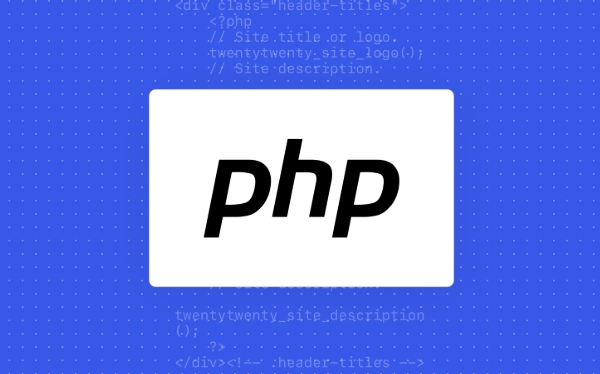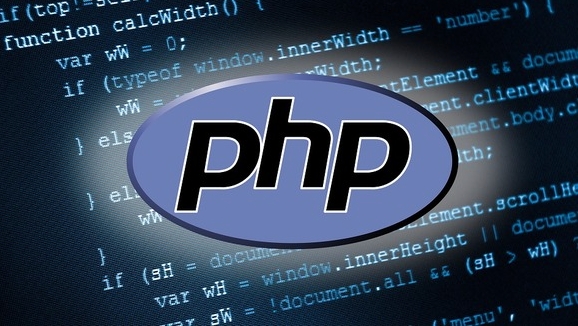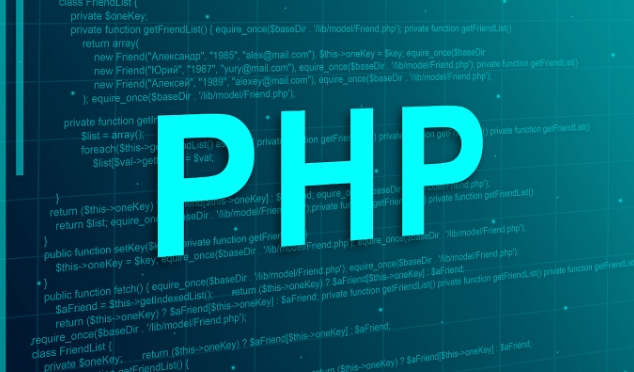How to quickly test PHP code snippets?
Jun 25, 2025 am 12:58 AMTo quickly test a PHP code snippet, use an online PHP sandbox like 3v4l.org or PHPize.online for instant execution without setup; run code locally with PHP CLI by creating a .php file and executing it via the terminal; optionally use php -r for one-liners; set up a local development environment with XAMPP or MAMP for complex tests involving databases or sessions; alternatively, utilize PHP’s built-in web server with php -S localhost:8000 for quick HTTP context testing.

If you need to quickly test a PHP code snippet, there’s no need to overcomplicate things. The key is to find a method that’s fast, reliable, and requires minimal setup. Whether you're debugging a function or trying out a new syntax, here are some practical ways to get instant results.

Use an Online PHP Sandbox
One of the quickest ways to test small PHP snippets is by using an online sandbox like 3v4l.org or PHPize.online.
These tools let you write and run PHP code instantly without installing anything. They’re especially useful when you want to check how different PHP versions handle your code.

- 3v4l.org shows output across multiple PHP versions at once
- PHPize lets you test with specific version and extensions
Just paste your code, hit run, and see the result — no server needed.

Run Code Locally with PHP CLI
If you already have PHP installed on your machine, the command line interface (CLI) is a fast way to test code.
Create a .php file, for example test.php, and put your code inside:
<?php echo "Hello, world!";
Then run it in your terminal with:
php test.php
This gives immediate feedback and works great for quick tests or scripts that don’t rely on a web server.
Tips:
- Use
php -rto run one-liners directly from the command line:php -r 'echo "Hello";' - Make sure PHP is added to your system path so you can call it from any directory
Set Up a Local Development Environment
For more complex snippets or those needing a full environment (like database access), setting up a local server with tools like XAMPP, MAMP, or Laravel Homestead makes sense.
Steps:
- Download and install XAMPP or MAMP
- Place your PHP file in the
htdocsfolder - Start Apache and visit
http://localhost/yourfile.phpin your browser
This method takes a bit more time upfront but gives you full control — helpful if your snippet relies on forms, sessions, or databases.
Bonus Tip: Use Built-in Web Server (Optional)
If you don’t want to install a full stack like XAMPP, PHP has a built-in web server ideal for quick testing:
php -S localhost:8000
Put your PHP file in the same directory and open http://localhost:8000/yourfile.php in your browser.
It’s not for production use, but perfect for checking how a snippet behaves in a real HTTP context.
That's it — these methods cover most common scenarios. Pick the one that fits your current setup and needs.
The above is the detailed content of How to quickly test PHP code snippets?. For more information, please follow other related articles on the PHP Chinese website!

Hot AI Tools

Undress AI Tool
Undress images for free

Undresser.AI Undress
AI-powered app for creating realistic nude photos

AI Clothes Remover
Online AI tool for removing clothes from photos.

Clothoff.io
AI clothes remover

Video Face Swap
Swap faces in any video effortlessly with our completely free AI face swap tool!

Hot Article

Hot Tools

Notepad++7.3.1
Easy-to-use and free code editor

SublimeText3 Chinese version
Chinese version, very easy to use

Zend Studio 13.0.1
Powerful PHP integrated development environment

Dreamweaver CS6
Visual web development tools

SublimeText3 Mac version
God-level code editing software (SublimeText3)

Hot Topics
 How do I stay up-to-date with the latest PHP developments and best practices?
Jun 23, 2025 am 12:56 AM
How do I stay up-to-date with the latest PHP developments and best practices?
Jun 23, 2025 am 12:56 AM
TostaycurrentwithPHPdevelopmentsandbestpractices,followkeynewssourceslikePHP.netandPHPWeekly,engagewithcommunitiesonforumsandconferences,keeptoolingupdatedandgraduallyadoptnewfeatures,andreadorcontributetoopensourceprojects.First,followreliablesource
 What is PHP, and why is it used for web development?
Jun 23, 2025 am 12:55 AM
What is PHP, and why is it used for web development?
Jun 23, 2025 am 12:55 AM
PHPbecamepopularforwebdevelopmentduetoitseaseoflearning,seamlessintegrationwithHTML,widespreadhostingsupport,andalargeecosystemincludingframeworkslikeLaravelandCMSplatformslikeWordPress.Itexcelsinhandlingformsubmissions,managingusersessions,interacti
 How to set PHP time zone?
Jun 25, 2025 am 01:00 AM
How to set PHP time zone?
Jun 25, 2025 am 01:00 AM
TosettherighttimezoneinPHP,usedate_default_timezone_set()functionatthestartofyourscriptwithavalididentifiersuchas'America/New_York'.1.Usedate_default_timezone_set()beforeanydate/timefunctions.2.Alternatively,configurethephp.inifilebysettingdate.timez
 How do I validate user input in PHP to ensure it meets certain criteria?
Jun 22, 2025 am 01:00 AM
How do I validate user input in PHP to ensure it meets certain criteria?
Jun 22, 2025 am 01:00 AM
TovalidateuserinputinPHP,usebuilt-invalidationfunctionslikefilter_var()andfilter_input(),applyregularexpressionsforcustomformatssuchasusernamesorphonenumbers,checkdatatypesfornumericvalueslikeageorprice,setlengthlimitsandtrimwhitespacetopreventlayout
 What is data serialization in PHP (serialize(), unserialize())?
Jun 22, 2025 am 01:03 AM
What is data serialization in PHP (serialize(), unserialize())?
Jun 22, 2025 am 01:03 AM
ThePhpfunctionSerialize () andunserialize () AreusedtoconvertcomplexdaTastructdestoresintostoraSandaBackagain.1.Serialize () c OnvertsdatalikecarraysorobjectsraystringcontainingTypeandstructureinformation.2.unserialize () Reconstruct theoriginalatataprom
 How do I embed PHP code in an HTML file?
Jun 22, 2025 am 01:00 AM
How do I embed PHP code in an HTML file?
Jun 22, 2025 am 01:00 AM
You can embed PHP code into HTML files, but make sure that the file has an extension of .php so that the server can parse it correctly. Use standard tags to wrap PHP code, insert dynamic content anywhere in HTML. In addition, you can switch PHP and HTML multiple times in the same file to realize dynamic functions such as conditional rendering. Be sure to pay attention to the server configuration and syntax correctness to avoid problems caused by short labels, quotation mark errors or omitted end labels.
 What are the best practices for writing clean and maintainable PHP code?
Jun 24, 2025 am 12:53 AM
What are the best practices for writing clean and maintainable PHP code?
Jun 24, 2025 am 12:53 AM
The key to writing clean and easy-to-maintain PHP code lies in clear naming, following standards, reasonable structure, making good use of comments and testability. 1. Use clear variables, functions and class names, such as $userData and calculateTotalPrice(); 2. Follow the PSR-12 standard unified code style; 3. Split the code structure according to responsibilities, and organize it using MVC or Laravel-style catalogs; 4. Avoid noodles-style code and split the logic into small functions with a single responsibility; 5. Add comments at key points and write interface documents to clarify parameters, return values ??and exceptions; 6. Improve testability, adopt dependency injection, reduce global state and static methods. These practices improve code quality, collaboration efficiency and post-maintenance ease.
 How do I execute SQL queries using PHP?
Jun 24, 2025 am 12:54 AM
How do I execute SQL queries using PHP?
Jun 24, 2025 am 12:54 AM
Yes,youcanrunSQLqueriesusingPHP,andtheprocessinvolveschoosingadatabaseextension,connectingtothedatabase,executingqueriessafely,andclosingconnectionswhendone.Todothis,firstchoosebetweenMySQLiorPDO,withPDObeingmoreflexibleduetosupportingmultipledatabas






